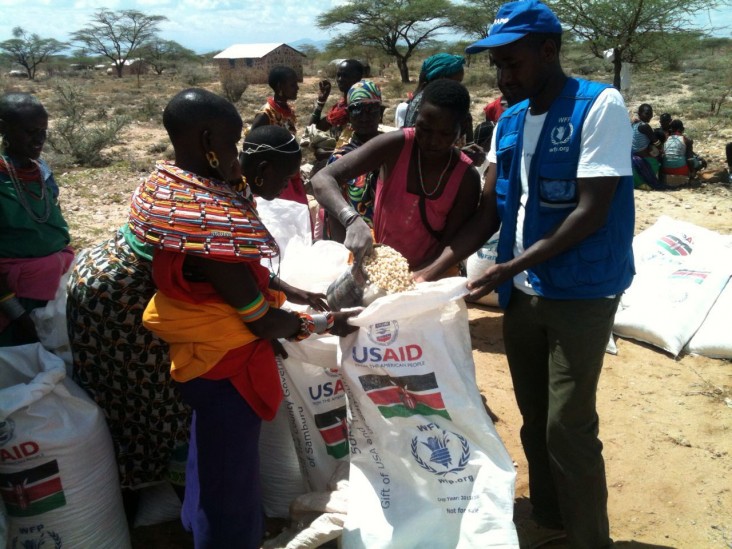Speeches Shim

January 2017—In Samburu County in northern Kenya, Josephine Lempirikany, a 50-year-old mother of six, remembers when food distributions were unreliable. Her family went hungry and she was unable to pay her children’s secondary school fees because she spent all her income on what food she could afford. But now, they have a consistent supply of food and her children are healthier and able to stay in school.
Across Kenya, counties are playing a larger role in providing emergency assistance to their residents. Through the Kenyan devolution process, which started in 2012, the federal government transferred responsibility and budget for a wide range of governmental activities to local county governments.
One county in particular has become an exceptional leader in addressing its residents’ food insecurity. The Samburu County government is still young, but according to Deputy Governor Joseph Lemarkat, county leaders agree they have a responsibility to provide food assistance to the poor and vulnerable. And while the county government has budgeted funds to purchase maize, a staple of the Kenyan diet, they also realized that they did not have the technical knowledge and logistical capacity to distribute it.
This realization has led to a key partnership with USAID and the U.N. World Food Program (WFP).
“Here is a county that is committed to putting their resources where it matters and rightly so, because the government is responsible for feeding its people,” says Josephine Muli, head of WFP’s Samburu County field office. “It’s only that resources are limited, so other players like WFP and USAID come in to fill the gap.”
They do this by twinning, or combining, in-kind food contributions from host country governments—in this case, maize—with cash-based contributions from USAID to deliver and distribute food. Combining the maize with other food provided by USAID and WFP allows beneficiaries to get a full food basket every month, including some of the local foods they prefer.
With USAID support, the county government is learning how to manage food distribution, including hiring trucks to transport the maize, employing distribution monitors, using warehouse space, and hiring loaders and offloaders. County government staff have also been trained on commodity procurement processes, budgeting, and supply chain management in order to gradually take on all aspects of food assistance, with support and coordination from the national government.
The Samburu County government has contributed approximately 2,700 tons of maize thus far, and with $1 million from USAID in twinned funds, they are reaching as many as 82,000 people per year. While the twinning program, with its use of local resources, can provide overall cost savings, more importantly, it is an efficient and sustainable way to provide assistance by relying on and promoting local ownership.
In Kenya, USAID has contributed nearly $138 million in food assistance, nutritional support and asset creation programs, reaching over 1 million people since October 2014.
LINKS

Comment
Make a general inquiry or suggest an improvement.